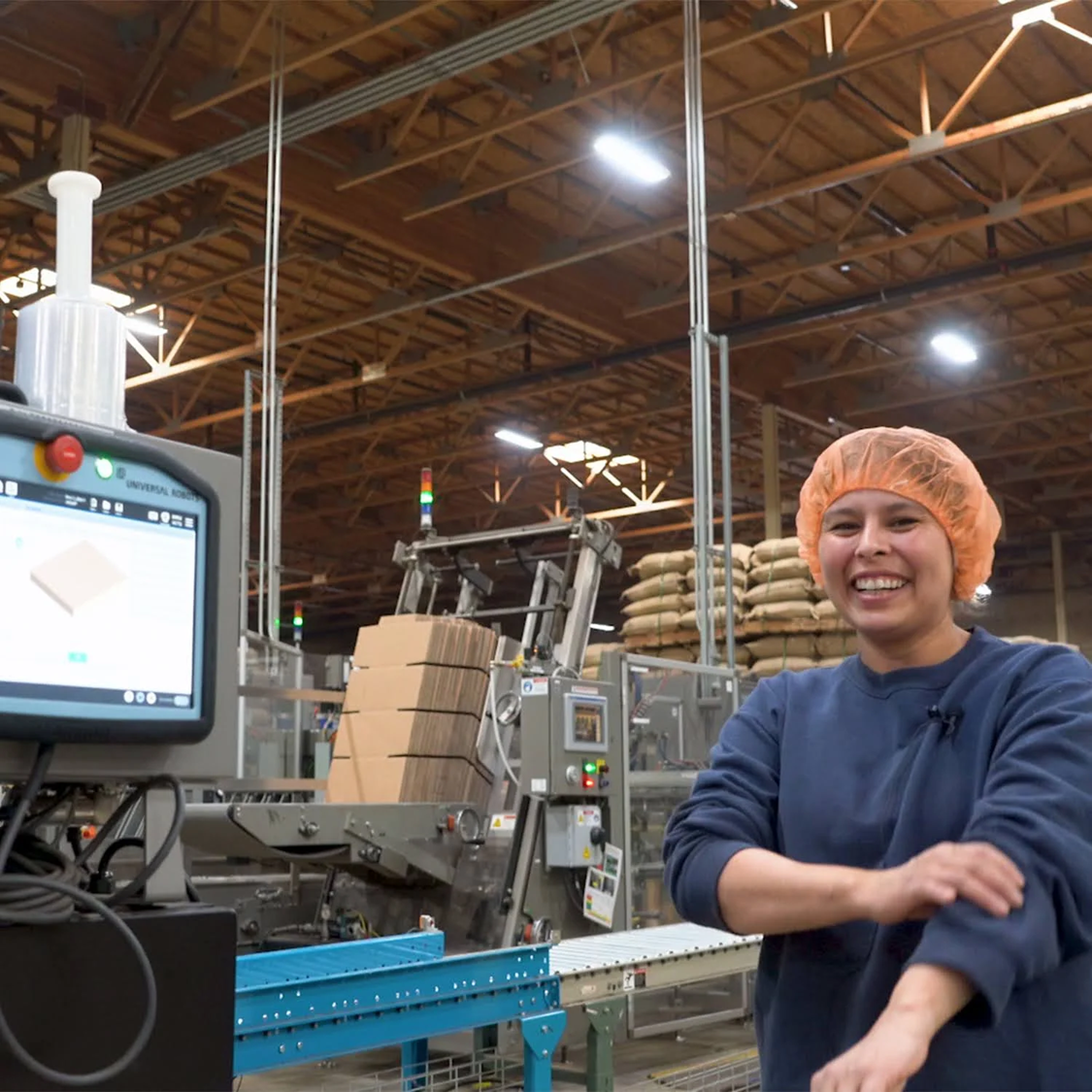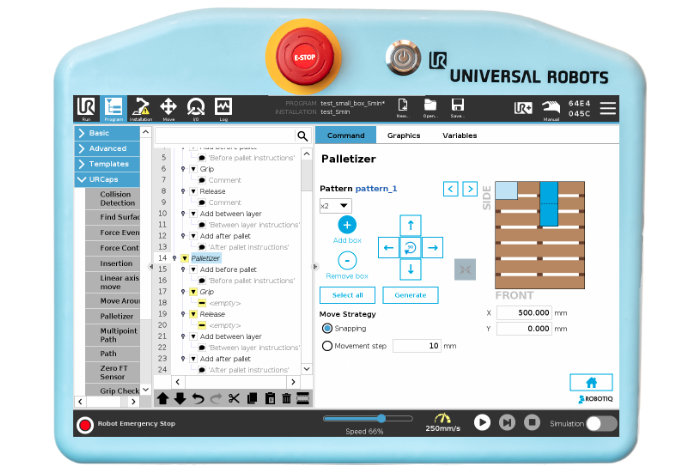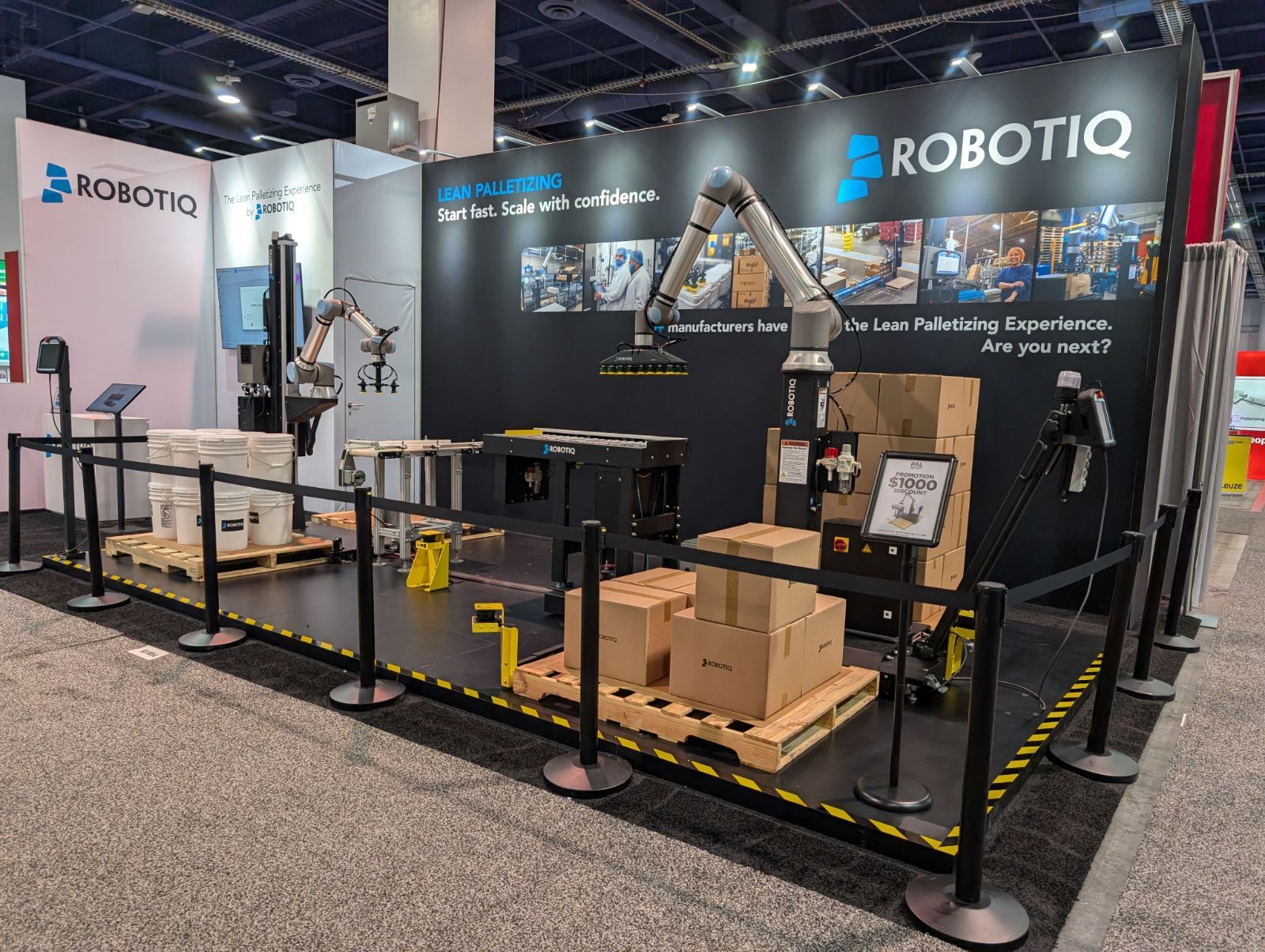From injury to innovation: Why manual palletizing is ripe for automation

Posted on May 29, 2025 in Automation
2 min read time
On paper, palletizing looks like a basic task: stack boxes, repeat. In reality, it’s one of the most injury-prone jobs in manufacturing—and one of the easiest to automate.
If you're looking for a low-risk, high-reward place to start with automation, look no further than the end of your line. Here’s why manual palletizing is causing more damage than you think—and how automation turns it into a strategic advantage.
One worker, one hour, endless risk
Meet Julia. She works in packaging and spends part of her shift lifting boxes onto pallets. Some weigh 12 lbs, others more. On a good day, she handles over 700 lifts in a single hour. No twisting, just repetitive motion—over and over.
Now zoom out.
Multiply Julia’s routine across multiple workers, across multiple shifts. Then add:
- Fatigue
- Missed rotations
- No time for breaks
- Varying box weights and pallet heights
This isn't just a tough job; it's a setup for injuries. And not the kind that heal overnight. We're talking muscle strains, nerve damage, chronic back pain, and long-term disability. It’s no wonder manual palletizing ranks high on the injury charts.

The math behind the mayhem
Let’s break it down:
- 33% of overexertion injuries come from lifting/lowering tasks.
- Injuries to the back and shoulders account for 79% of these cases.
- One single strain injury can cost a business $67,000+.
- The indirect cost (productivity loss, turnover, morale) can push that over $2 million in lost sales.
The fix? Remove the risk entirely
Unlike other complex automation projects, palletizing is a no-brainer. It’s repetitive. It’s consistent. It’s begging for a cobot.
Here’s what happens when you automate:
✅ You eliminate the ergonomic risk altogether
✅ Your workers move into safer, higher-value tasks
✅ You get predictable performance and less downtime
✅ You future-proof one of your most vulnerable processes
And with Robotiq Palletizing Solutions, setup takes just a few days. No custom engineering. No extra coding. Just a safer, more productive line.
Why this matters now
Labor shortages. Insurance hikes. Tight margins. If you’re feeling the pressure, you’re not alone, and manual palletizing isn’t helping. Every injury is a setback. Every delay, a cost.
But with automation, every pallet becomes an opportunity to do better.
Take the next step
💻 Don't miss our Ergonomics webinar with certified safety expert Carla Silver - register today!
📘 Need more details and statistics? Download our Ergonomics ebook, also by Carla Silver.






-1.jpg)
Leave a comment